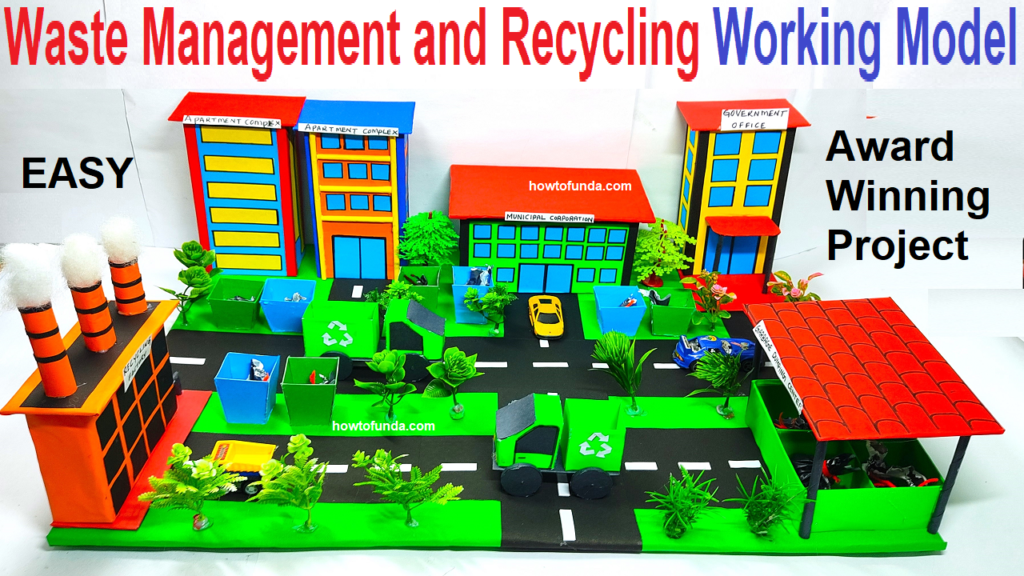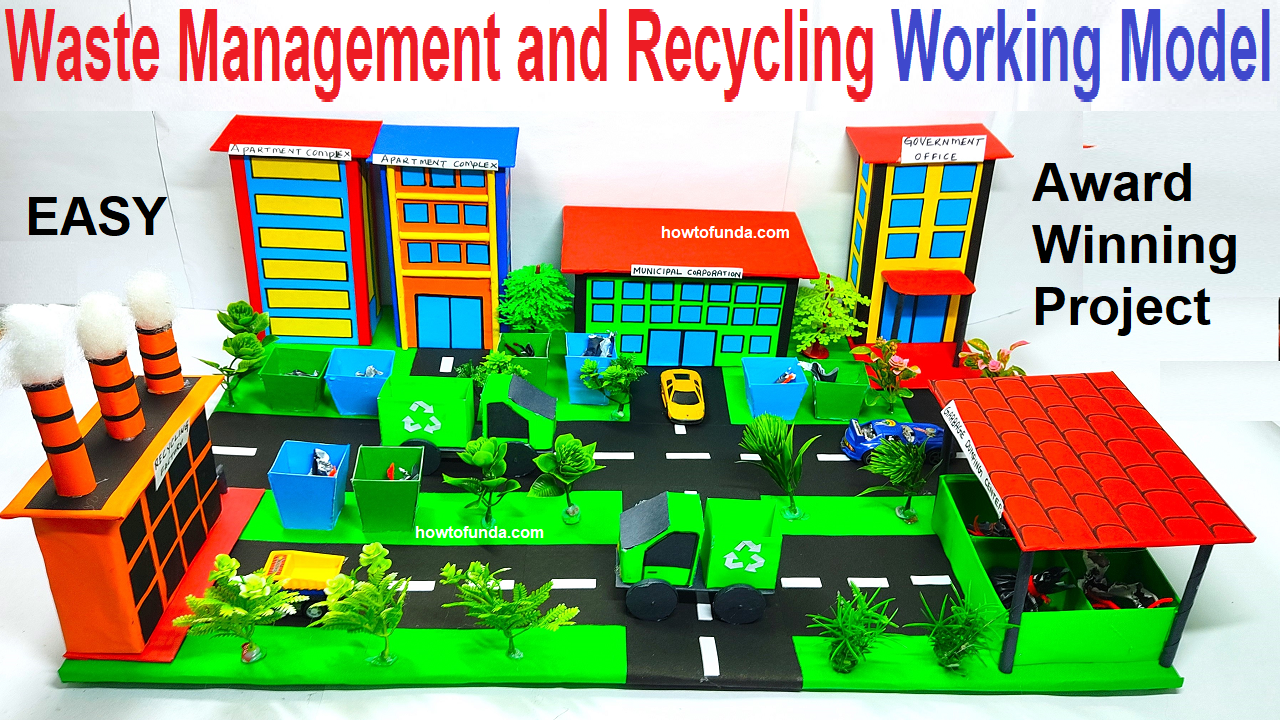Solid waste management and recycling are crucial aspects of environmental sustainability. The management of solid waste involves the collection, disposal, and recycling of various types of waste generated by human activities.
Recycling, in particular, focuses on the recovery and reuse of materials from waste, aiming to reduce the environmental impact of resource consumption and waste disposal.
Here’s an introduction to solid waste management and recycling:
Solid Waste Management:
- Definition:
- Solid waste refers to any discarded or abandoned material, including household garbage, industrial waste, construction debris, and agricultural waste.
- Challenges of Solid Waste:
- Rapid urbanization and population growth contribute to increased waste generation.
- Improper disposal can lead to environmental pollution, health hazards, and the depletion of natural resources.
- Components of Solid Waste Management:
- Collection: Gathering and transporting waste from its source to a centralized location.
- Transportation: Moving waste to treatment or disposal facilities.
- Processing and Treatment: Methods include composting, incineration, and biological treatment to reduce the volume and impact of waste.
- Disposal: Safely and responsibly discarding the remaining waste in landfills or other designated areas.
Recycling:
- Definition:
- Recycling is the process of converting waste materials into reusable products to prevent waste accumulation and reduce the consumption of new raw materials.
- Importance of Recycling:
- Resource Conservation: Recycling conserves natural resources by reusing materials, reducing the need for raw material extraction.
- Energy Savings: Recycling often requires less energy than producing new materials from raw resources.
- Waste Reduction: Recycling decreases the amount of waste sent to landfills, mitigating environmental pollution and promoting sustainable waste management practices.
- Commonly Recycled Materials:
- Paper: Newspapers, cardboard, and office paper.
- Plastic: Bottles, containers, and packaging.
- Glass: Bottles and jars.
- Metal: Aluminum cans, steel cans, and scrap metal.
- Recycling Process:
- Collection: Separate collection bins for recyclable materials at homes, businesses, and public places.
- Sorting: Materials are sorted at recycling facilities based on their types.
- Processing: Cleaning, breaking down, and preparing materials for manufacturing.
- Manufacturing: Recycled materials are used to create new products.
- Community Engagement:
- Encouraging individuals and communities to participate actively in recycling programs helps create a sustainable waste management ecosystem.
- Government Regulations and Policies:
- Governments often implement regulations and policies to promote recycling and sustainable waste management practices.
Creating a waste management and recycling project working model with cardboard can be an informative and visually engaging exhibit for a science exhibition.

Below is a step-by-step guide to help you build a comprehensive model:
Materials:
- Large cardboard or foam board
- Small cardboard boxes (for buildings and truck)
- Craft knife or scissors
- Colored markers or paints
- Glue or tape
- Small plastic containers or bottle caps (for bins)
- Small plastic or paper waste items (for representation)
- Images or printouts of recycling symbols
- Labels or markers for building names and truck details
- Small plastic toy truck wheels (optional)
Step by Step Instructions waste management and recycling project working model
- Prepare the Base:
- Use a large piece of cardboard or foam board as the base for your model.
- Create Buildings:
- Cut small rectangular shapes from cardboard to represent different buildings. Label them accordingly, such as “Recycling Factory,” “Government Office Buildings,” “Apartment Buildings,” and “Waste Item Collection Center.”
- Decorate Buildings:
- Use colored markers or paints to decorate each building. Add details like windows, doors, and roof structures. Make the recycling factory distinct from the others.
- Place Buildings on Base:
- Arrange the buildings on the base to simulate a community layout. Position the recycling factory strategically among other buildings.
- Design Waste Item Collection Center:
- Cut a small area on the base to represent the waste item collection center. Place small plastic containers or bottle caps to symbolize bins. Add labels like “Paper,” “Plastic,” “Glass,” etc., to represent different waste categories.
- Add Dust Bins in Each Building:
- Attach small plastic containers or bottle caps near each building to represent dust bins. Label them appropriately.
- Create Truck:
- Construct a small cardboard truck to represent the vehicle that collects waste from dustbins and transports it to the collection center. Add small plastic toy wheels to make it movable if desired.
- Display Recycling Symbols:
- Print out or draw recycling symbols and place them near the recycling factory and waste item collection center to indicate their roles in the recycling process.
- Include Waste Items:
- Scatter small plastic or paper waste items around the model to represent actual waste. Ensure they are properly segregated in the waste item collection center.
- Label and Explain:
- Add labels or markers to explain each component of your model.
- Provide information about the recycling process, waste segregation, and the role of each building and the truck in waste management.
The working model visually demonstrates the key components of a waste management system, emphasizing the importance of sorting waste at the source, recycling, composting, and proper disposal.
Working Principles of Solid Waste management working model
- Waste Sorting and Collection:
- Recyclable Waste: Items such as paper, plastic, and glass are collected in recycling bins. These items are transported to a recycling facility where they are sorted, cleaned, and processed into new materials.
- Organic Waste: Food scraps and garden waste are collected in compost bins. These materials are taken to a composting area where they decompose naturally, turning into nutrient-rich compost used for gardening and agriculture.
- Non-recyclable Waste: General waste that cannot be recycled or composted is collected in non-recyclable bins and transported to a landfill.
- Recycling Facility:
- At the recycling facility, materials are sorted into different categories (plastic, paper, glass). Each type of material is processed separately to be reused in manufacturing new products. This reduces the need for raw materials and minimizes environmental impact.
- Composting Process:
- Organic waste decomposes through microbial activity in the composting area. This process breaks down the waste into humus, a rich soil amendment that can enhance soil quality and support plant growth.
- Landfill Management:
- Non-recyclable waste is disposed of in landfills. Landfills are engineered to contain waste, prevent contamination of groundwater, and reduce odors and pests. Landfill management includes layering waste with soil, compacting it to reduce volume, and monitoring for environmental safety.
Educational Value:
- Understanding Waste Categories: The model teaches the importance of separating waste into recyclables, organic waste, and non-recyclables.
- Environmental Impact: Demonstrates how recycling and composting reduce the amount of waste sent to landfills, conserving resources and protecting the environment.
- Waste Management Processes: Provides insight into the journey of waste from collection to processing, highlighting the roles of recycling facilities, composting, and landfill management.

